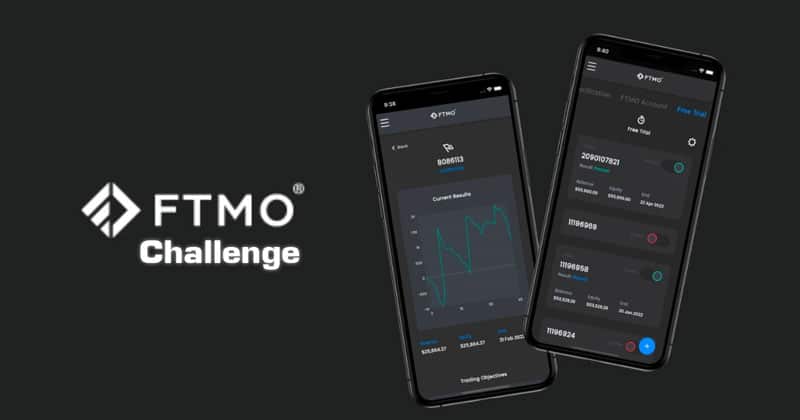If you’re an aspiring trader looking to prove your skills, the FTMO Challenge might be just the thing for you. The FTMO Challenge is a trading competition that offers traders the chance to prove their profitability over a set period. Successful traders can then move on to trade with the firm’s capital, allowing them to trade larger positions and potentially earn significant profits. However, passing the challenge is no easy feat, and many traders fail to meet the requirements. In this article, we’ll discuss some tips and strategies that can help you win the FTMO Challenge.
Understanding the FTMO Challenge
Before diving into the tips and strategies, it’s essential to understand the FTMO Challenge and its requirements. The challenge consists of two stages – the evaluation phase and the verification phase. During the evaluation phase, you’ll be required to trade a simulated account for a specified period while adhering to specific rules and risk management requirements. If you meet the requirements and show consistent profitability, you’ll move on to the verification phase, where you’ll trade a live account with FTMO’s capital.
The evaluation phase has several requirements that traders must adhere to, including trading a specific minimum number of trading days, maintaining a minimum profit target, and keeping the drawdown within a specific limit. Traders are also required to follow specific rules, such as trading only during certain hours and adhering to risk management rules.
Tips and Strategies for Passing the FTMO Challenge
Understand the Rules and Requirements
The first step to winning the FTMO Challenge is to understand the rules and requirements thoroughly. Read through the terms and conditions and ensure you understand the minimum trading days, profit targets, and drawdown limits. Also, understand the risk management rules and ensure you adhere to them strictly.
Start with a Solid Trading Plan
Before you start trading the simulated account, ensure you have a solid trading plan. Your trading plan should define your trading strategy, including entry and exit rules, risk management, and position sizing. Ensure your plan adheres to the FTMO Challenge rules and requirements.
Keep a Trading Journal
Keeping a trading journal is an essential aspect of successful trading. It allows you to review your trades, identify mistakes and weaknesses, and refine your trading strategy. Ensure you keep a detailed record of your trades, including entry and exit points, position size, and the reason for taking the trade.
Stick to Your Plan and Avoid Emotional Trading
One of the most significant challenges traders face is emotional trading. Emotions such as fear, greed, and hope can cloud judgment and lead to impulsive trading decisions. Ensure you stick to your trading plan and avoid deviating from it due to emotions.
Focus on Risk Management
Risk management is a crucial aspect of trading and is essential to pass the FTMO Challenge. Ensure you define your risk management rules, such as the maximum allowable drawdown and position size, and adhere to them strictly.
Be Patient and Disciplined
Trading can be a challenging and emotional endeavor, and it’s essential to remain patient and disciplined throughout the process. Don’t rush into trades or deviate from your plan due to impatience or emotions. Remember that successful trading requires discipline and patience.
Learn from Your Mistakes
No trader is perfect, and everyone makes mistakes. The key is to learn from your mistakes and use them to refine your trading strategy. Analyze your losing trades and identify the reasons for the losses. Use this information to refine your trading plan and improve your future trades.
Take Breaks and Rest
Trading can be mentally and emotionally taxing, and it’s essential to take breaks and rest when necessary. Avoid overtrading and take breaks when you feel stressed or fatigued. Taking breaks and resting can help you avoid emotional trading and maintain a clear and focused mind.
Manage Your Expectations
It’s essential to manage your expectations when attempting to pass the FTMO Challenge. Understand that passing the challenge is a difficult task and may require multiple attempts. Don’t become discouraged if you fail the challenge and use the experience to refine your trading skills and strategy.
Utilize Trading Education and Resources
Finally, it’s essential to utilize trading education and resources to improve your trading skills. FTMO provides a range of resources and educational materials to assist traders in passing the challenge. Take advantage of these resources and seek additional education and training to improve your chances of success.
Conclusion
The FTMO Challenge offers traders a unique opportunity to prove their trading skills and potentially earn significant profits. However, passing the challenge requires discipline, patience, and a solid trading plan. By adhering to the rules and requirements, focusing on risk management, and staying disciplined and patient, traders can increase their chances of passing the challenge and trading with FTMO’s capital.
FAQs
Can I trade any financial instrument during the FTMO Challenge?
No, FTMO specifies the financial instruments that traders can trade during the challenge. Ensure you understand the allowed instruments before beginning the challenge.
How long does the evaluation phase of the FTMO Challenge last?
The evaluation phase of the FTMO Challenge can last between 30 and 60 days, depending on the chosen program.
Can I withdraw profits during the evaluation phase of the FTMO Challenge?
No, traders cannot withdraw profits during the evaluation phase of the FTMO Challenge. All profits are subject to verification during the verification phase.
What happens if I fail the FTMO Challenge?
If you fail the FTMO Challenge, you can retake the challenge after a specified waiting period. Use the experience to refine your trading skills and strategy.
Is passing the FTMO Challenge a guarantee of long-term trading success?
No, passing the FTMO Challenge is not a guarantee of long-term trading success. Successful trading requires ongoing education, discipline, and risk management.





